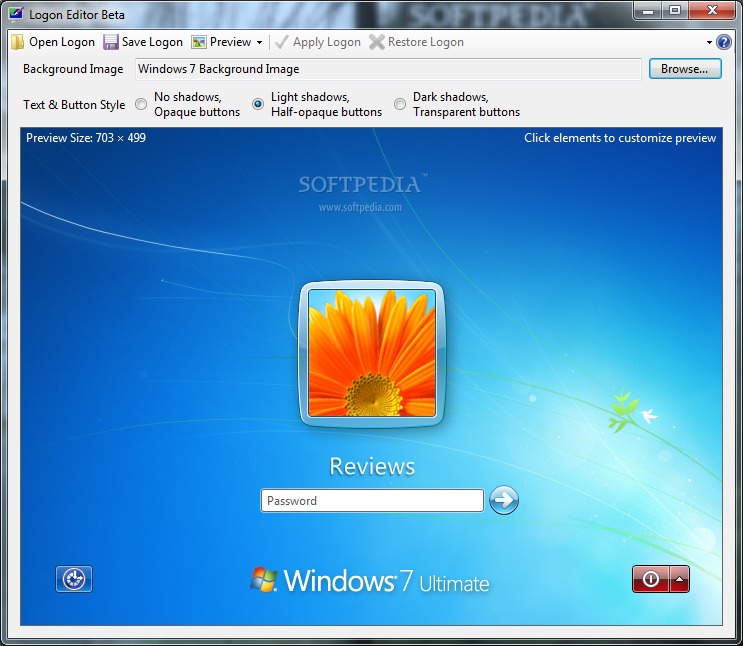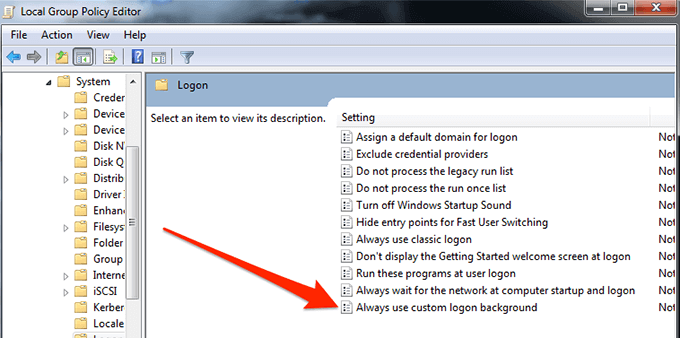

RELATED: How to Add a PIN to Your Account in Windows 10 Windows 8 and 10 Users: Set Custom Lock Screen and Sign In Backgrounds

In Windows 7, there’s only one sign in screen and you’ll have to enable a custom background for it in the Registry (or through Group Policy) before you can select a new background. You can change the lock screen background through a simple setting, but you’ll have to dive into the Registry to change the sign in screen background. The second is the sign in screen itself where you enter your password, PIN, or picture password. The first is the lock screen-the one you have to click or swipe to get out of the way so you can sign in. You can also change a couple of other settings, such as disabling the annoying "Ctrl+alt+del" screen, the option right below the one I just described.In Windows 8 and 10, you actually see two different screens at sign in. Double click this setting and in the box that shows up, select "Enabled" and click OK. In the list of settings on the right, locate "Interactive logon: Do not display last user name". In the option tree on the left, go to "Security Settings" / "Local Policies" / "Security options".

You are opening up the Local security policy management console. Press Windows+R to get the "Run" dialog, and enter "secpol.msc" in the text box then click OK. So how do you restore the good old logon screen with a simple text box for the user name, and a simple text box for the password? It's actually a lot simpler than some people would think. All they were told is to enter their username and password and they never expected to have to do anything else. If, like me, you work in a computer-unfriendly environment such as a school, you'll find that a lot of people are unable to locate the "Switch user" button or simply wouldn't just dare to click it.


 0 kommentar(er)
0 kommentar(er)
